PREMIUM & ENTRY FORM
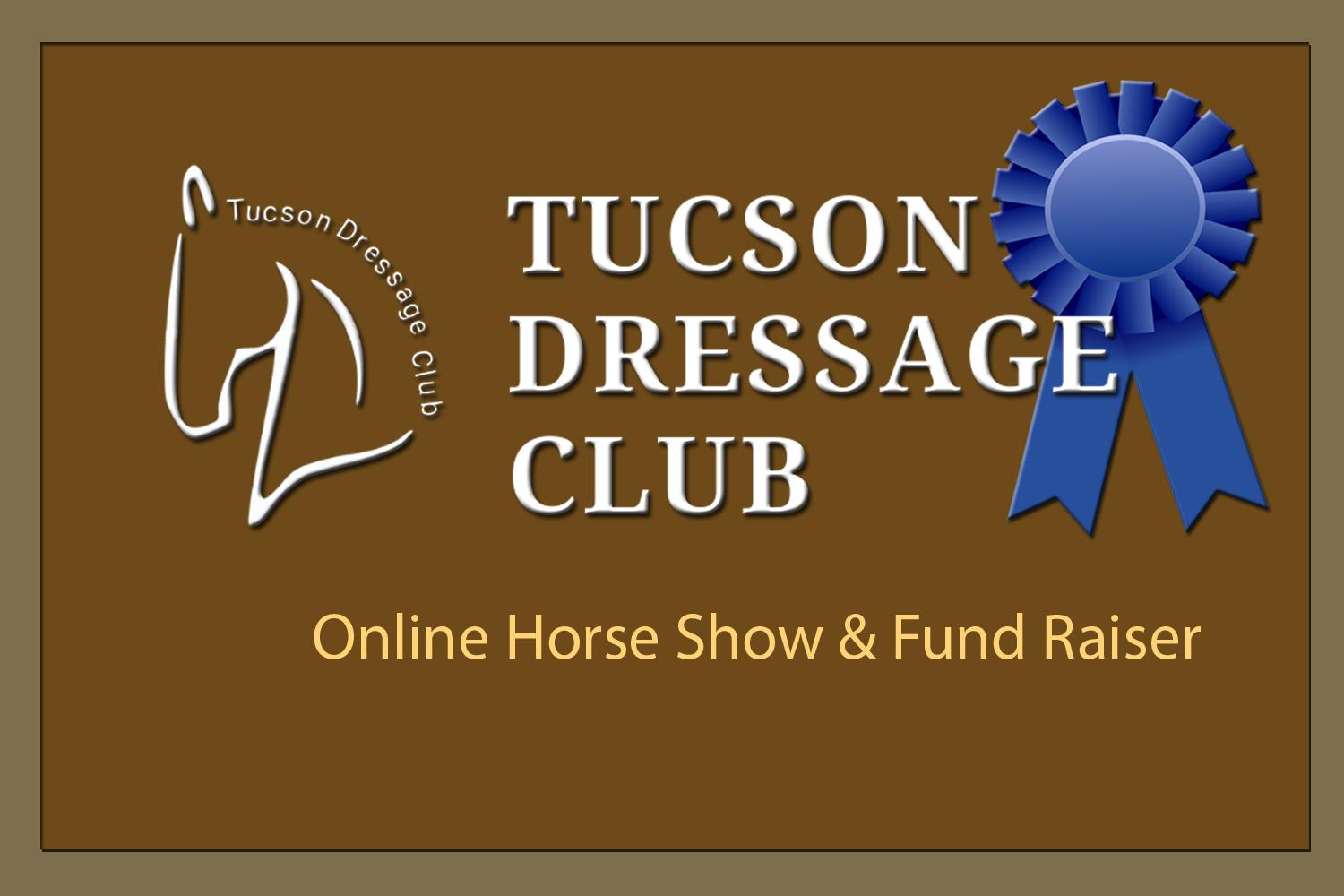
#13559 Tuscon Dressage Club Online Horse Show
Guaranteed Judging Dates
February 22-24, 2025
VIDEOS & ENTRIES CLOSE: February 23, 2025
RIDES MAY BE RIDDEN & ENTERED PRIOR TO ABOVE DATES.
WDAA Recognized
JUDGE:
Doreen Horsey USEF S, WD R
Available Tests
Classical, FEI, Eventing, Para, Western, Prix Caprilli
OFFERED DIVISIONS
Open, AA, JR/YR, 50+ Senior, Riser
Riser is a 40+ AA rider, who performs Trot Rising in all trot work from USDF Training to 4th Level Classes
OFFERED TESTS
USDF National
Classical FEI
WDAA - Western Dressage
WDAA PARA
Para FEI
USEF EVENTING
FEI EVENTING
MISC NATIONAL
PRIX CAPRILLI
Don't see a class you would like to ride?
Email us. Most often we can add it to the show. See the present tests immediately available:
FEE PER RIDE
$45
No other fee’s required except: WDAA membershp required if rider desires points. See WDAA Rules
Orginal Entry Method
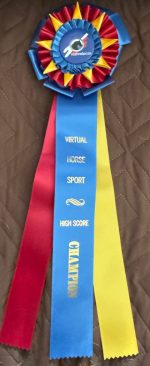
High Score Ribbon
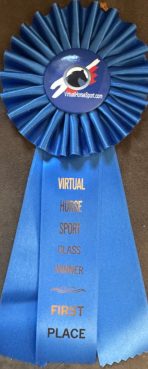
For Classes/Divsion of 3 or more riders
AWARDS & PRIZES
High Point Ribbons and Prizes in any combination of INTRO, OPEN, AA, JR/YR, FEI & PARA. 1st Place class ribbons with 3 or more rider in same division.
Prizes may consist of any combination of shirts, hats, pens, braiding kit, braiding aprons, or simular.
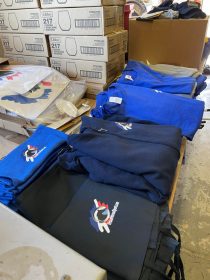
RULES & REGULATIONS
2025 VHS RULES & VIDEO FILMING REQUIREMENTS
1. All competition rides must hold up a hand-held sign BEFORE the ride, with Rider’s Name, Date, Horse Name, Test being ridden and Show Name. Otherwise ride is Hors Concour.
2. All competition rides must perform a Equipement check, WITHOUT stopping the video camera on the last halt salute. A equipment check requires the video to show the full sides of the horse, spurs and opening the horses mouth to display the bit. See this YouTube video by Judge Ida Norris, for best practice . At the option of the show office, rides without equipment check will be considered Hors Concour.
3. All videos MUST be filmed in landscape mode and from the letter C with nothing between the camera and the rider, such as fences. See FILMING tutorial for best results.
4. Ride must be filmed especially for this show. Previous rides before other licensed judges will be denied with no refund.
5. Show clothing not required. See WDAA rules for western dressage rides.
6. Ride may be ridden and submitted PRIOR to judging dates.
7. FULL Competition rules.
WESTERN DRESSAGE RULES
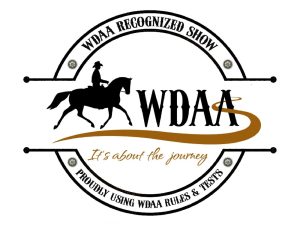
This event IS a recongized WDAA show. Please review: WDAA Official link & VHS rules
WDAA RECOGNIZED ONLINE SHOW RULES AND GUIDELINES
To be recognized by WDAA, online shows must meet the same criteria for recognition as for live shows. Refer to the Show Recognition page.
Online show hosts should provide this information by a link to this web page to their exhibitors and judge for them to be informed about how these shows are to be conducted and judged. Online shows are available from several providers. All shows that meet the specific criteria provided by the show host in addition to those listed below are eligible for WDAA show recognition. Online rail classes are not eligible for WDAA recognition.
Please take all guidelines into consideration when preparing your video test submission.
- Use arenas that are as close to regulation size as possible and be sure letters are set appropriately to be easily viewed by the judge. Cones with large letters on them and poles on the ground to delineate the corners are acceptable and encouraged. For arena measurements, please visit HERE
• Intro tests, Basic tests, and Walk–Jog and Intermediate Horsemanship may use a 20 x 40-meter arena or a 20 x 60-meter arena.
• Level 1 tests through Level 5 tests and Advanced Horsemanship must use a 20 x 60meter arena
• All Freestyles are in a 20 x 60-meter arena
2. Videos of tests must be unedited from start to finish, including the equipment, attire, and bit check. Videos must be always one continuous recording with the horse and rider visible.
3. Videos must be filmed in LANDSCAPE orientation.
4. The test must be videoed from behind C, 3 to 6 feet from the rail, where the judge would normally be seated. Try adding a little height by standing on a mounting block, for example.
5. Prior to beginning the test, a sign must be held up showing the name of the show, WDAA show recognition #, date of the show, horse’s name, class # and test.
• Remove the sign just before the ride begins.
• The videographer can hold the sign then move back to behind the camera or hold the sign in front of the camera at arm’s length while also holding the camera.
• The sign must be in focus, for the correct ride, and held in front of the camera long enough to be readable.
6. Keep the horse in frame, paying close attention to the near corners. You may zoom in on the far end and corners. Videos must be in focus. Keep the camera centered on the horse on the centerlines.
7.Make sure to keep the letters in the frame that are elements of the test being performed. Keep the horse in the LAST 1/3 of the viewing screen in landscape view (2/3 of the view screen in front of moving horse). This will allow the judge to see approximately two letters in front of the horse which is necessary for depth perception and line evaluation. In general, keep the horse’s feet in the bottom 1/3 of the viewfinder.
8. Coaching during the test is not allowed EXCEPT for WDAA Exceptional Rider tests.
9. The natural background sound for the test must be audible. Tests with no sound at all will not be accepted. Freestyles must have music in the background but not digitally added to the video itself.
10.The test may be called (except for Freestyle).
11.Each video must be of a test ridden at the show where it was videoed; the video may not be a ride from a previous show (online or live)
EQUIPMENT CHECK REQUIREMENTS FOR ONLINE SHOWS
- As soon as the test is finished, the camera must slowly circle the horse and rider showing all equipment and attire from both sides, including spurs and whip if used. The spurs must be shown for a count of three seconds. You do not need to spin the rowels.
• If the videographer is unable to enter the arena, at G the rider may turn the horse slowly, wait five seconds, then turn slowly to show the second side, and wait an additional 5 seconds to complete filming of the equipment. - Show the bridle on the horse, from both sides.
- After a view of both sides of the horse is shown the rider must dismount for the bridle check. • Exceptional riders are exempt from the bit dropping requirement and are not required to dismount. Participants should still abide by all USEF regulations pertaining to attire, tack, and equipment for the recognized show.
- Prior to dropping the bridle, show that two fingers can fit between the cavesson (if there is one) or bosal and the horse’s cheek, then drop the bit.
- Hold the bridle still so the bit can clearly be seen, in frame, for a minimum count of five seconds.
- Be sure to zoom in on the curb chain and bit.
- If you are using a bosal, you must drop that as well. After you remove the bosal, show both sides of your horse’s face, unobstructed, as well as the bosal. Please demonstrate flexibility of the bosal.
- A cavesson must be shown to the camera, both inside and out. Please demonstrate flexibility of the cavesson.
- Prior to submitting your video, review the equipment check in detail to ensure that all of the above requirements have been met and that the equipment checks have a clear, focused, steady view of your tack.
- You are responsible for knowing the correct rules for tack, attire, and equipment for Western Dressage. See USEF WD121-123 for additional information.
- Always direct questions concerning showing to the online show host listed on the prize list.
WDAA Equipment and Attire Guide
The purpose of this WDAA Equipment and Attire Guide is to provide explanations and additional information and some visual guides about the appointments (attire and tack) allowed and not allowed under the USEF Western Dressage Division. In the case of conflicting verbiage, the current USEF WD Rule Book will supersede this document.
“At Federation Licensed Competitions, the C2 Steward or the person who is under the direction of the Steward and appointed by the competition management will be responsible for overseeing the checkingof the horse, tack, and attire. A horse must be eliminated from the test just completed if the horse or any tack and/or attire are in violation of the rules and/or the tongue has been tied. C2 Stewards or Equipment Inspectors are only required to inspect bits and other appointments on a minimum of one-third of the horses in a class. (See WD124).”
At a non-USEF WDAA competition or a USEF Competition Lite, a designated individual must assume the responsibility of overseeing the checking of horses, tack, bits, and attire. See further information in this document for proper equipment check procedures. Horses with illegal equipment in the warm-up ring will be eliminated from the next class they are entering unless the equipment can be corrected before the scheduled ride time for that entry.
APPOINTMENTS/TACK/BITS
Bridle:
• Any western-type headstall must be used.
• A western cavesson (braided or plain) or pencil bosal with or without a get-down rope with space for two fingers placed between the cavesson and the jowl of the horse is allowed. The inside of the noseband must be smooth and free of any metal, other than the buckle.
Illegal bridle equipment
• Flash, figure-eight or dropped nose bands.
• Mechanical hackamores
Hackamore/Bosal:
• A hackamore (bosal) is permitted on a horse of any age, and at any level. A hackamore includes a bosal, rounded in shape, and constructed of braided rawhide or leather, and must have a flexible non-metallic core attached to a suitable headstall. No other material of any kind is to be used in conjunction with the bosal, i.e. steel, metal, or chains. Bosals may be wrapped with smooth. electrical tape to prevent rubbing.
Reins:
When the rider uses a snaffle bit, the following reins may be used:
• loop/connected reins
• split reins
• buckled reins
• mecate reins
• romal reins without a popper
Two hands must be used with any of these combinations. Horsehair, rope reins and mecate reins are allowed for bosals and snaffles. The mecate tail can be tied to the saddle horn, held by the rider, or tucked under the rider’s belt. When the rider uses a curb, the following reins may be used:
• romal reins
• split reins
• loop/connected reins
• buckled reins
When using a curb with romal reins, only one hand is allowed; when using other rein choices, one or
two hands are allowed.
Hand position on reins:
In the case of romal reins, the romal is held in one hand with no fingers between the individual reins.
• The end of the romal may be held in the hand not used for reining to keep the romal from swinging and to adjust the position of the rein. The reins must be held so that there is at least 16” of rein between the hands.
• In the case of when split reins are held in one or two hands, the rider may not switch back and forth (from one handed to two handed) during a test. There are no restrictions on method of holding reins in two hands. When split reins are held in one hand, there are two ways that the rider may use them.
• The rider may put one finger between the split reins; the ends of the reins fall on the side of the reining hand.
• The rider may hold both reins in one hand without a finger between the reins; the hand must be around the reins. The ends of the split reins may be held in the hand not used for reining to keep them from swinging and to adjust the position of the reins. No finger is allowed between the reins. The reins must be held so that there is at least 16” of rein between the hands.
• In the case of looped/connected reins, buckled reins, the reins are held in one or two hands; the rider must not switch back and forth during a test. (Exception: Freestyle). At the end of the Free Walk or Free Jog, riders using split reins held in one hand may use the free or offhand to pull the reins back to the desired length. Riders using romal reins may use the hand using the romal to alter the tension or length of the reins from the bridle to the reining hand.
Saddle:
A standard American Western stock saddle with swells, a seat, cantle, skirt, fenders, and Western stirrups is required. A working Western side saddle is also acceptable.
a. Optional and permitted features may include:
1. Horn
2. Padding or pads on the seat of saddle
3. Bucking rolls
4. Tapaderos, except in Western Dressage Equitation
The following features and style of saddles are not permitted:
1. Thigh & knee rolls
2. Saddles: Australian, Baroque, English, McClellan, and Spanish
c. Silver equipment will not count over a good working outfit.
d. A breastplate and/or crupper may be used.
Curb Bits:
There is no discrimination against any standard western bit. A standard western curb bit may be used ona horse of any age being ridden at any level.
A standard Western bit is defined as having a shank with a maximum length overall of 8 1/2” (215.9mm). The mouthpiece will consist of a metal bar 5/16” (7.9 mm) to 3/4” 19.05 mm) in diameter as measured one inch in from the shank.
• The bars may be inlaid but must be smooth or latex wrapped; the bars may be encased in smooth 5/16” (7.9 mm) to 3/4” (19.05 mm) in diameter tubular barrels that rotate around the bars.
• Nothing may protrude above or below the mouthpiece (bar) such as extensions, prongs or rivets designed to intimidate the horse. Rollers attached to the center of the bit are acceptable and may extend below the bar.
Jointed mouthpieces are acceptable and may consist of two or three pieces and may have one or two joints. A three-piece mouthpiece may include a connecting ring of 1 1⁄4 inch (31.75 mm) or less in diameter or a connecting flat bar of 3/8 to 3⁄4 inch (9.5mm – 19.05 mm) measured top to bottom with a maximum length of 2” (50 mm), which lies flat in the mouth, or a roller or port as described herein.
• The port must be no higher than 3 1⁄2 inches (88.9 mm) maximum with roller(s) and covers acceptable. Jointed mouthpieces, half-breeds and spade bits are standard. Wire on the braces (above the bars and attaching to the spade) of a traditional spade bit is acceptable.
• Reins must be attached to each shank.
• A flat curb chain or leather chin strap must be used with a curb bit. Curb chains or flat leather chin straps must be at least 1/2 inch (12.7 mm) in width and lie flat against the jaw of the horse. No wire, rawhide, metal, or other substance can be used in conjunction with or as part of the flat leather chin strap or curb chain. Round, rolled, braided or rawhide curb straps are prohibited.
• A slobber guard (may be bar, chain, strap, or string) on a curb bit is permitted.
• Rein chains with a spade bit are allowed. All curb bits must be free of mechanical devices. Nothing, such as extensions, rivets, or prongs, may protrude below the mouthpiece (bars). The following, but not limited to these, are prohibited:
• Slip or gag bits, half cheeks, bits with hooks and slots, donut, or flat polo mouthpieces and kimberwicks.
• Roping bits with reins attached to a single ring at the center of a cross bar.
• Any rein design or other devices that increase the effective length and thereby the leverage of the shank of a standard western bit.
• Round, rolled, braided, or rawhide curb straps are prohibited.
FOR A DOWNLOAD VERSION OF THESE RULES, WITH PICTURES, CLICK HERE
REFUNDS AND CREDITS
We do not offer REFUNDS after the purchase of a entry, just as in on-site shows. There is one acception: Cancellation. When an event is cancelled, paying riders will be given the option of a refund or transfer. Credits can be issued, when the show office is notifed by E-mail PRIOR to the start of the event, if the horse or rider is injured or sick. Rides will then be transferred to another show or used in a ride-a-test. Alternatively, rides may be gifted to another rider.
ENTRY DISCLAIMER: Please read before making a entry purchase
Output of this system, this website, may or may not use the offical test forms designed and owned by the respective organization : USEF, FEI, USAWE, BEW, BD, WECAN, USPEA or WDAA. Nor does this site or it’s parent business, Multimedia Designs, LLC, represent the USEF, FEI, USAWE, BEW, BD, WECAN, USPEA or WDAA.
In our custom test form, the wording of each movement reflects the motion but not the official copy. Please refer to your USEF, FEI, USAWE, BWE, BD, WECAN, USPEA or WDAA tests booklet or pamphlets for the description of each movement and riding goals as set by the official organizations. With the exception of the Western Dressage Association of America, all shows on this system should be considered Schooling Shows. USEF/USDF/USAWE/BWE/BD/WECAN/ USPEA nor FEI will not acknowledge any performance or result, even if reviewed by an licensed judge, toward awards, medals or other achievement activities.